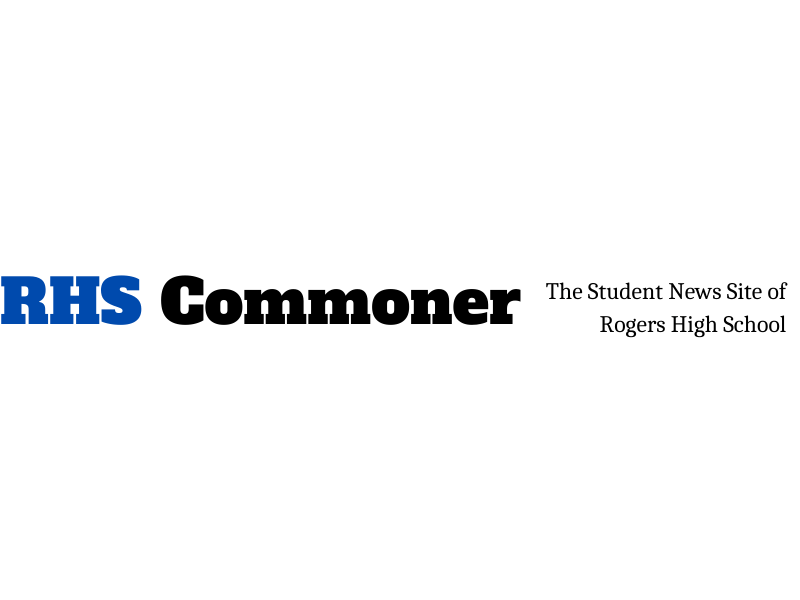Rogers walks out for Parkland
After the Valentine’s Day school shooting in Florida, Rogers students walked out in unity.
Photo by Kelvin Fernando
From left to right: Kelia Fields, Mandy Fifield, Miriam Kayongo
As an act of solidarity with the victims of the Feb. 14 shooting at Parkland High School in Florida, students at Governor John R. Rogers High School walked out of class on the morning of March 14 and met together at the front of the school.
At 10 a.m., anywhere from 80 to 100 students had congregated at the flag pole to listen to two of their fellow classmates address those present. After a brief thank you from the leaders, students were asked to join hands with those next to them and bow their heads in a moment of silence.
One student in attendance was Lyndse Miller. When asked why she had chosen to attend the gathering, she said, “There were 17 lives lost in the Parkland shooting and I felt those 17 kids, my age and younger, needed to be represented.”
Schools across the nation had chosen March 14 to leave class in protest of the lack of change regarding current gun control laws at the federal level. Most walk-outs lasted 17 minutes for the 17 victims of the shooting, and Rogers student leadership had chosen to stand together from 10 to 10:17 a.m.
During this time, two students gave speeches. Ricky Lopez, an ASB officer, addressed the students and promised that they were not the generation to leave these issues to their children.
“These people who do the shootings, they’re hurting people, that’s why they hurt people,” Lopez said. “Standing by and waiting for other schools in other school districts or other states to change this, that’s not our job. Our job is to make a difference by treating others the way we want to be treated.”
Another student, Juwon Lee, spoke to the crowd. He had written note cards containing his speech and brought them with him while he addressed the students.
“Together, we can ignite the future. Together, we take a stand. Together we will not let those 17 victims fade into the annals of history,” Lee said. “Our voices will be heard loud and clear: We are here, and we matter.”
As he stepped down, Lee pledged to write letters to state government inviting them to come to the school during the core-flex classes in the coming weeks for open discussion with the students.
Both had promised safety and action and urged students to speak with the staff and each other during the 17 minutes they were gathered in an attempt to find out what Rogers students could do themselves to feel safe at school.
Several students that joined at the beginning of the walk had brought signs to the meeting, painted with phrases such as “Protect kids not guns,” and, “What happens when there’s no one left to protect?” Other students chose to wear T-shirts with political phrases or images.
Just past 10 a.m., as the normal passing period between second and third periods was ending, more students began to join the crowd at the front of the school grounds. Several times the newcomers were asked to quiet down as the volume increased, however, chatter and giggling continued for several minutes through the designated silence.
Despite the number of students in attendance, many Rogers students chose to stay behind in classrooms in favor of watching others leave. Some had said the reason for the walk-out was too foggy or simply didn’t align with their political views.
The main reason I didn’t go was because I was unclear on what the message was.
— Becca Bernson
When asked why she had chosen not to leave class that day, Becca Bernson said, “The main reason I didn’t go was because I was unclear on what the message was. If it was just a memorial for the kids at that school, I would’ve gone. I just heard too many mixed messages to feel passionate enough to do that.”
While some students believed it was organized in remembrance of the Florida shooting, others wanted the rally to focus specifically on gun control rights. The meeting itself appeared rather unorganized and had very little publication around the school in the days leading up to it.
Students that joined later were rowdy and paying little attention to the students around them. Despite the seriousness of the meeting, many of them were laughing and teasing.
The disagreement in opinion continued after the walk-out as well. While students went back to class and joined up with the other people that didn’t attend, more discussions and debates could be heard in the hallways.
“I don’t think enough people are trying to show they want change,” Bailey Connors said, “it wasn’t for gun rights, it was for the victims. But a lot of people were being negative towards people that did the walkout. Even if you don’t want to support it, you don’t have to belittle the people that did.”
Though students were divided in their opinions of the meeting, the school seemed to return to normal in third period. Most students entered class quietly and sat down to their work as if it was any regular school day.


















Kelvin Fernando • Apr 16, 2018 at 12:45 pm
Amazing